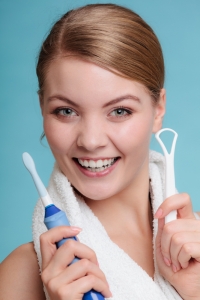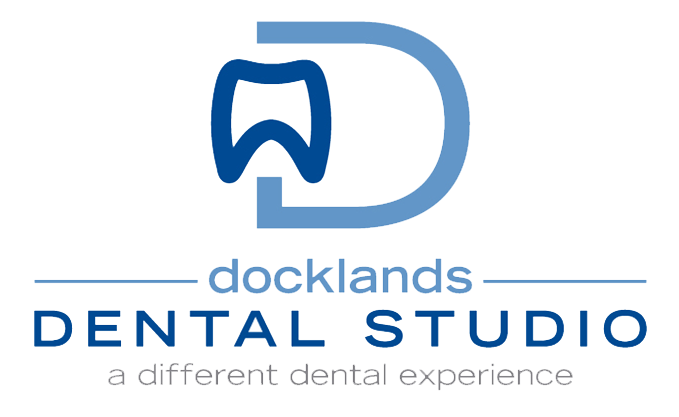 Bacteria thrive in dark, moist places such as your mouth. There are approximately 600 types of bacteria hiding within your mouth. The buildup of these bacteria can lead to gum disease, tooth decay, bad breath, and other dental conditions. This is why proper dental hygiene is so important. You may be thinking, this doesn’t apply to me, I brush my teeth twice a day and floss regularly. But, did you know that you could do even more to prevent the buildup of bacteria in your mouth? At Docklands Dental Studio, we can’t express enough how important it is to maintain clean, healthy mouths. Daily brushing and flossing is only the first step, but you may also want to use a tongue scraper to get the upper hand in controlling mouth bacteria.
Bacteria thrive in dark, moist places such as your mouth. There are approximately 600 types of bacteria hiding within your mouth. The buildup of these bacteria can lead to gum disease, tooth decay, bad breath, and other dental conditions. This is why proper dental hygiene is so important. You may be thinking, this doesn’t apply to me, I brush my teeth twice a day and floss regularly. But, did you know that you could do even more to prevent the buildup of bacteria in your mouth? At Docklands Dental Studio, we can’t express enough how important it is to maintain clean, healthy mouths. Daily brushing and flossing is only the first step, but you may also want to use a tongue scraper to get the upper hand in controlling mouth bacteria.
What Is a Tongue Scraper?
Tongue scrapers can be purchased at your local grocery store or pharmacy for a very inexpensive price. This at-home dental tool helps remove bacteria residing on your tongue. You may have heard how important it is to brush your tongue, so it makes sense that it is equally as important to scrape your tongue. This plastic tool doesn’t hurt at all, and it’s a great way to effectively remove bacteria that sits on the surface of your tongue, in the crevices between the taste buds.
Bad breath bacteria stations itself on the surface of your tongue, that’s why tongue scraping is an incredibly beneficial task for reducing bad breath. When working your way through your daily dental routine, you should begin by brushing each of your teeth with a soft bristle toothbrush and your favorite toothpaste. We recommend a minty, fresh, whitening toothpaste, but you can use whichever toothpaste appeals to you the most. Be sure to reach all of your teeth, even those easy to miss back teeth. Brush the fronts and backs of your top and bottom arches, for about two minutes. Next you should floss between each tooth, using a c-curve motion to get just under the gum line. This will remove any food stuck between your teeth, as well as any plaque that’s residing in your smile. Here comes the most over looked step: time to scrape that tongue!
How to Scrape
Scraping your tongue is so easy; it’s almost silly not to do it every day. Simply take the plastic tongue scraper and press it against the back part of your tongue. With some pressure, pull the tool toward to opening of your mouth, with a scraping motion. That’s it. That’s how you effectively scrape your tongue. Easy, right? Repeat this step each time you brush your teeth and soon it will become a regular part of your daily dental routine. Many people do it in the morning, but nighttime is also a great time to remove more bacteria, due to the way they thrive in our closed mouths as we sleep. Since we produce less saliva when we sleep, bacteria tend to repopulate at night—that’s why we get wake up with a dry, sour mouth and “morning breath.”
Dental Hygiene Mistakes
There is such a thing as brushing too much. When you excessively brush your teeth, you put yourself at risk for eroding your tooth enamel. This enamel is important because its main job is to protect your teeth. Another common mistake is skipping a step in your dental routine. The steps are simple: brush, floss, scrape. You can use a mouthwash, as well, to get that extra clean feeling we all love. Mouthwashes are a great way to ward off bacteria, and can even help whiten your teeth if you choose one with a whitening agent. You should see the dentist every six months to ensure the maintenance of your smile. Our smiles are the first thing that many people notice about us, we should want to take proper care of them.
If you’re ready to learn more about tongue scraping or have questions about where to find a tongue scraper, call Docklands Dental Studio today. Call 03-9021-9487. If you are in Port Melbourne or South Wharf, you can easily get to our dental practice by taking the Web Bridge (foot or bike) or Wurundjeri Way (by car).
Also published on Medium.
